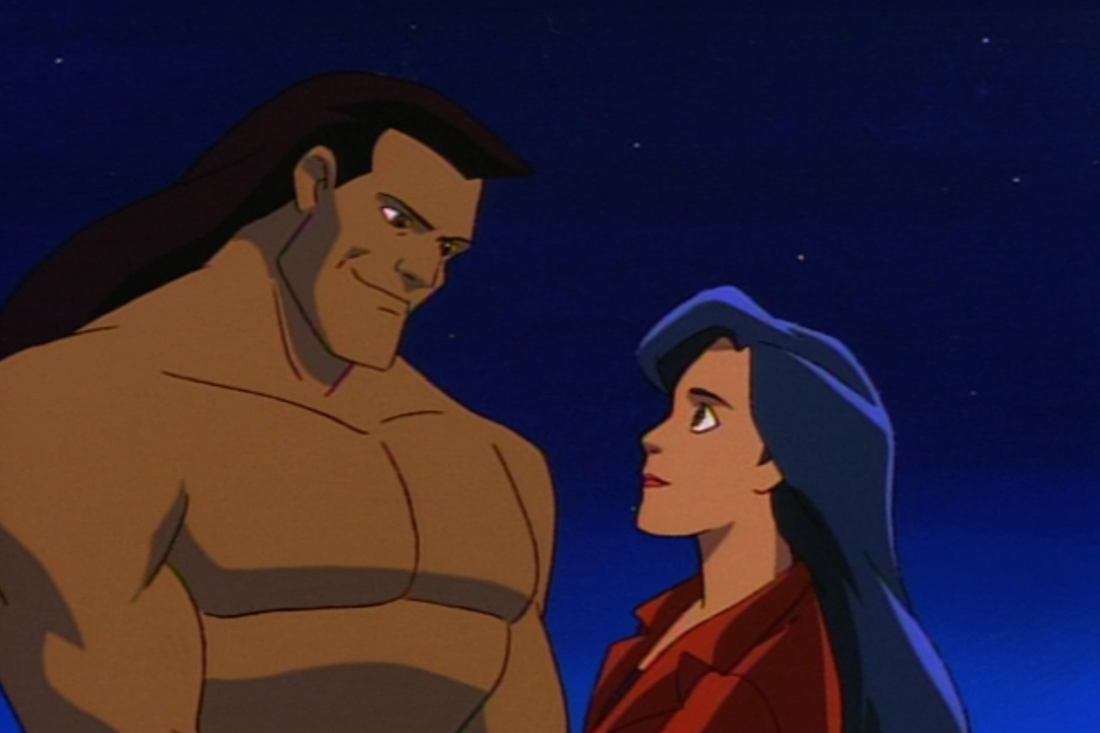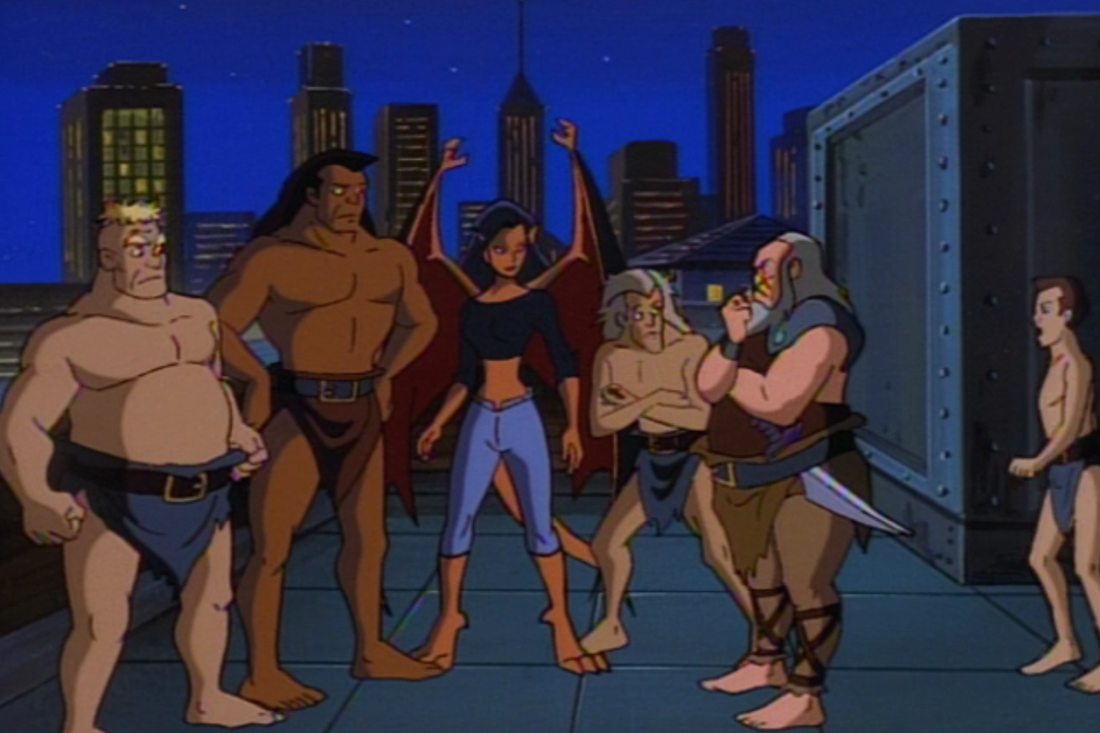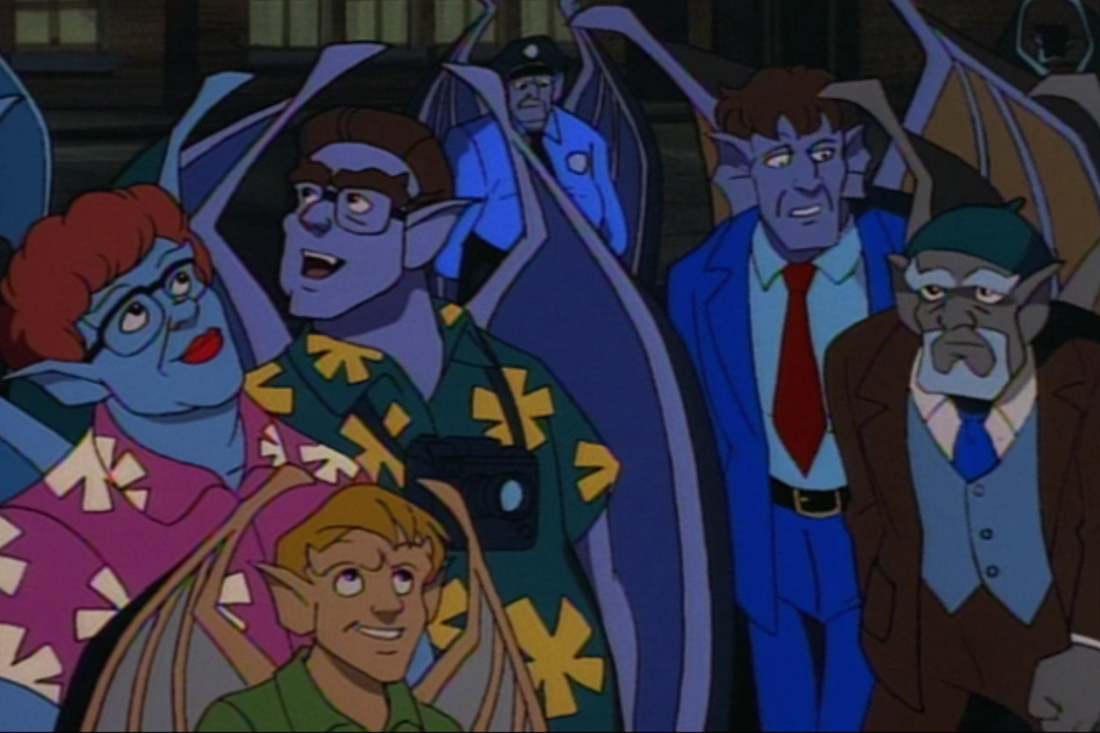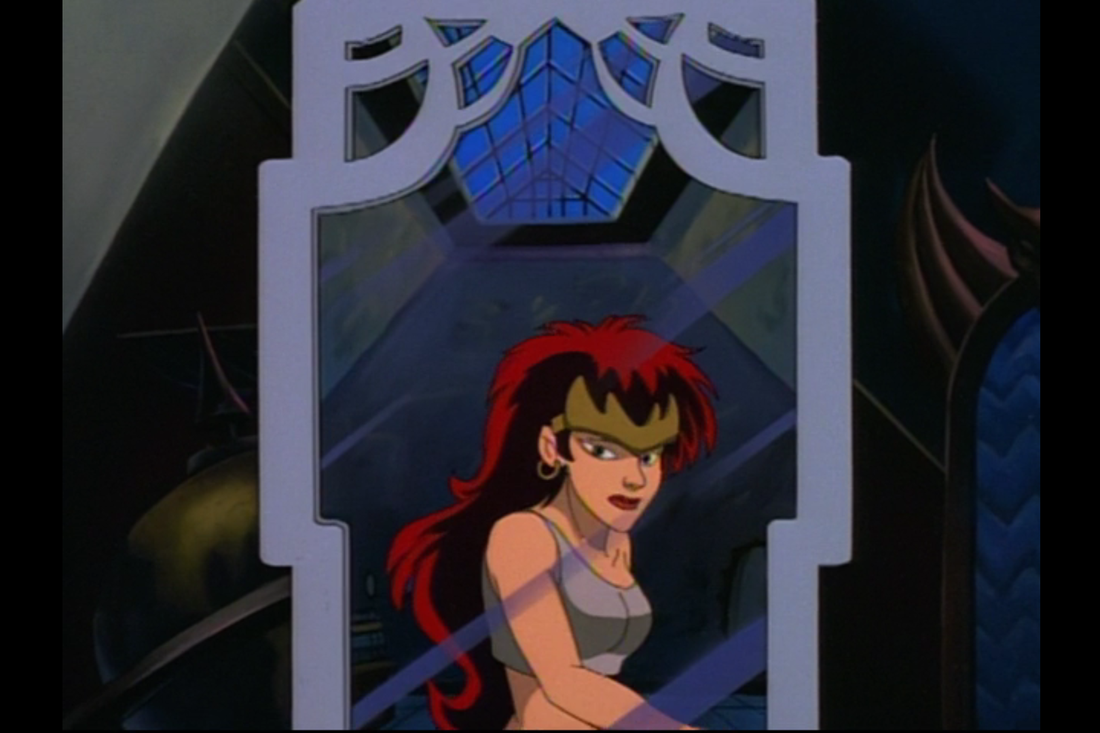
As a child of the ’90s, I can vividly remember the impact “Gargoyles” had on me and countless other young viewers. The series, with its blend of action, romance, and a touch of gothic aesthetics, was nothing short of revolutionary. Greg Weisman and his team crafted a world that was dark yet hopeful, edgy yet timeless, and I feel immensely proud to have grown up in an era where such a show existed.
If you were a child growing up in the ’90s who often found yourself home alone and tuned into Disney Television Animation’s afternoon shows, your daily routine was filled with lots of fun antics. Shows like DuckTales, Timon & Pumbaa from The Lion King, Mighty Ducks, 100 Dalmatians: The Series, Aladdin: The Series, and Hercules: The Animated Series were all popular choices, offering familiar characters and straightforward storylines. However, for those of us who appreciated something a bit different, the unique, darker, and thoughtfully crafted Gargoyles stood out. This unusual gem was part of Disney’s Afternoon lineup, but unlike its peers, it offered a distinct twist, such as its reinterpretation of the classic “be careful what you ask for” theme in the influential season two episode, “The Mirror.”
As a passionate movie critic, I found myself captivated by the unique and intriguing world of “Gargoyles”. Unlike its contemporary rival, Batman: The Animated Series, which was built upon decades of established Batman lore, Gargoyles was an innovative creation from scratch. The creative minds behind this animated series crafted a dark yet sincere narrative that resonated deeply with viewers.
In terms of theme, the animated series Gargoyles bore a striking resemblance to the formative millennial text X-Men: The Animated Series, as both portrayed their respective characters enduring prejudice from the majority and feeling isolated. The gargoyles reminisced about a time when more of their kind existed, reducing their current clan’s sense of aloneness. The dark and gothic setting of Gargoyles, however, set it apart in children’s programming. The characters were seemingly monstrous but were actually noble beings who only lived during the night, awakening with fangs, claws, and an affinity for shadows and moonlight as if they wore them like garments (alongside their minimal attire). Greg Guler, the artist responsible for the initial designs of characters such as Goliath, Hudson (Ed Asner), Demona, and Elisa, was inspired primarily by the demonic entity Chernabog from Fantasia. Early concepts for the gargoyles featured feathered or pterodactyl-style wings, and Guler experimented with Goliath having a crest instead of hair and spiky protrusions along his forearms. Guler recalls that the series initially provoked some apprehension from Disney due to its unique and unconventional nature. “If you look at their initial promotional materials for this show, Disney’s name isn’t even mentioned – it’s Buena Vista Productions – because they were so nervous,” Guler says. “They sent things to Comic-Con; I remember there being a large statue of Goliath in the middle of the floor with nothing around him. They just didn’t know how to market it.”
What made “Gargoyles” appealing, as evidenced in “The Mirror,” is the series’ underlying concept that what we consider monstrous or human is largely dependent on perspective. For any child who felt isolated and bullied because of their differences, like myself, the show’s portrayal of the Manhattan Clan yearning for friendship, love, and acceptance, just like “normal” humans, and deserving those things, was revolutionary. From its inception, the series aimed to explore these themes regularly and deeply, according to Weisman. He resigned from his role as Disney Television Animation’s director of series development after proposing “Gargoyles” with a team of collaborators, and served as the series’ supervising producer and supervising story editor for its first two seasons. (The series experienced significant creative changes between its second and third seasons, when it moved from a weekday-afternoon syndication slot to Saturday mornings on ABC; Weisman and most fans consider the third season non-canonical.) On the series’ underlying theme, Weisman remarks, “We have an innate tendency towards tribalism. Perhaps that made sense for survival in the distant past. But now, it’s causing us more harm than good.”

In this series, “The Mirror” episode is the most creative expression of a theme asking viewers to live with empathy rather than contempt. The Manhattan Clan transforms into humans while Elisa and New York citizens become gargoyles, but these new human-gargoyles still treat their former gargoyle selves with fear and mistrust. Demona, stealing a magical mirror resembling an Art Deco-style guillotine, summons Puck (Brent Spiner), the mischievous sprite from Shakespeare’s “A Midsummer Night’s Dream.” Sensing Demona’s lingering feelings for Goliath, she commands Puck to cast a spell to remove Elisa Maza. However, Puck, playing tricks, transforms Elisa into a gargoyle under the impression that she was one all along and that the Manhattan Clan were always human. As Goliath, Hudson, and their teenage gargoyle friends attempt to retrieve the mirror, Puck repeatedly distorts Demona’s wishes. He then uses the World Trade Center to boost his spell, transforming the rest of Manhattan’s humans into gargoyles and turning the Manhattan Clan back into humans.
In Weisman’s perspective, the concept of species swapping was his brainchild, but he emphasizes that “The Mirror” episode was a collaborative effort between him, Lydia C. Marano (the writer), Brynne Chandler Reeves (story editor), and director Frank Paur. All four were creative partners and producers at the time. In 2000, on a Gargoyles fan site where Weisman has a regular column called “Ask Greg,” he shared the original memo he sent to Marano and Chandler Reeves about their first draft, his feedback on their second version, and his thoughts after re-watching the episode years later. Among the changes Weisman requested were eliminating a scene where the gargoyles eat hot dogs, adding more romantic moments between Elisa and Goliath, and keeping the transformations understated. Weisman had to advocate for the latter, as he believed it would make the episode clearer. According to him, “My theory [was] that the way the episode would work best is when each character or group of characters was transformed, they didn’t realize they had been transformed. They just felt how they were relative to the quote-unquote other.” However, his partners and the executives initially found this idea too complex for children to understand. Weisman countered by promising that the transformations would be the only part of the episode that wasn’t complicated, making it the key element that would clarify everything.

In a different phrasing, Weisman’s assertion holds true: “The Mirror” flows better without depicting New Yorkers reacting unexpectedly to gargoyles acquiring wings, muscular physiques, and bare feet. Instead, viewers can savor the absurdity of transformed gargoyles living their lives as tourists, fashionable teenagers, and Wall Street professionals. Guler humorously notes that their clothes mysteriously changed too, which is quite handy. The episode carries a somber undertone as we witness the anachronism of human-like gargoyles rushing about Manhattan in loincloths, armed with ancient weapons, and avoiding attractive women on the subway. In the third act of “The Mirror,” the gargoyles compel Puck to reverse everyone back to their original forms, but unintentionally, Demona shatters the mirror – an animation-absent scene as Weisman explains, resulting in a broken-glass sound effect at the end of the episode. Additionally, Puck curses Demona with a daylight human form without the gargoyles’ knowledge, setting a significant precedent for the remainder of the series. Earlier in the episode, the gargoyles dreamt about becoming shape-shifters capable of blending anywhere and potentially making new friends or even finding love – this longing remains palpable, especially between the star-crossed lovers Goliath and Elisa.

In the manner of classic gothic-romantic characters, Elisa and Goliath, in “The Mirror”, acknowledge their mutual feelings for each other but are unable to act upon them due to their reality. Initially, there are charming encounters and subtle flirtation between the two, as Weisman explains. Elisa’s face lights up when she transforms into a gargoyle and embraces Goliath, reveling in his presence. Goliath compliments Elisa and, when she jokes that he found her unattractive as a human, becomes embarrassed and shifts the conversation by feigning an updraft affecting their flight over the city. Weisman praises the acting of both Keith and Salli, noting that there’s a hint of accusation in Elisa’s reading. However, once the secret of their feelings is revealed, it cannot be concealed again. Goliath does not wish to hide it anymore. After gargoyle-Elisa saves human-Goliath from falling, he tries to discuss his emotions, but Elisa, unwilling to envision a future together without magic or other unrealistic circumstances, refuses. Goliath turns into stone for the day and walks away, with Elisa saying, “That’s just how it is.” This bittersweet conclusion marks the blossoming of a romance that ultimately ends in heartbreak. As Weisman stated to Marano and Chandler Reeves in his memo about their initial draft: “Make us almost taste it, then take it away. (I know, I’m a cruel man.)”
In the series, the artists and animation team alternated swapping the characters’ species, as stated by Guler. As the lead character designer for season two, Guler oversaw Elisa’s transformation into a gargoyle and Demona’s change into a human. This involved making Elisa more robust and slimming down Demona. Guler worked closely with Paur to design Puck’s appearance. The creative team aimed to make the human forms of the gargoyles resemble their voice actors as closely as possible, so Lexington, who was bald in his gargoyle form, received a brunette buzz cut like Adcox-Hernandez. Fagerbakke and Bennett significantly impacted Broadway and Brooklyn’s physical appearances and hairstyles.
In the finale of season two, Elisa and Goliath share their first kiss, an event which Guler believes broadened the show’s viewership. During a Comic-Con in San Diego, Guler recalls, “It was amusing because we were all on stage. I was seated next to Keith David, with the rest of the cast present. We anticipated seeing children, but it was mothers instead!” Guler chuckles. “I looked out, and it was wall-to-wall mothers, and Keith David turned to me and asked, ‘What’s going on with all these mothers?’ To which I replied, ‘They’re here for you, pal!'”
Reflecting on it now, neither Weisman nor I recall considering Gargoyles as a goth series during its creation. Instead, Weisman describes the ’90s-influenced aesthetic as “edgy” and “neo-punk.” However, with a witty dryness, he acknowledges that we were indeed Gothic in essence. The episode, “The Mirror,” carries the melancholic yet resilient theme that characterized goth content in the ’90s, contributing to its haunting evocativeness. Despite Disney’s reported plans for a live-action reboot series, I can’t disclose any details at this moment. The fate of an animated continuation is uncertain until Disney decides on the live-action concept one way or another. For now, “The Mirror” remains a testament to gothic romance pathos. Upon its completion, I felt validated and immensely proud, brimming with self-importance and vanity – but it was justified, as I believe it ranks among the best episodes we produced in the entire series.
Read More
- PENDLE PREDICTION. PENDLE cryptocurrency
- CKB PREDICTION. CKB cryptocurrency
- PBX PREDICTION. PBX cryptocurrency
- USD DKK PREDICTION
- GEAR PREDICTION. GEAR cryptocurrency
- EUR INR PREDICTION
- USD VND PREDICTION
- ICP PREDICTION. ICP cryptocurrency
- TANK PREDICTION. TANK cryptocurrency
- LDO PREDICTION. LDO cryptocurrency
2024-08-21 22:56